This page contains pictures of Napoleon's Line, Non-Line and Regiments Etrangers such as the Swiss Regts, Provisional Croatian Regts, Legion Hanovrienne, Irish Legion, Regiment de Westphalie to name just a few. The figures will all be Front Rank with appropriate conversions when necessary. The flags will be primarily GMB Designs.
1st Garde de Paris 1807-1809
The Garde de Paris wearing the white uniform that various sources state they wore during their participation in the Peninsular Campaign. The light
companies of the Garde de Paris were termed ‘chasseurs' and wore the light
infantry Carabinier-style bearskin. Both they and grenadiers of 1st and 2nd
regiments are depicted in contemporary illustrations by Otto Manuscript wearing
their bearskins in 1807 when they were part of the Grande Armee en route to
Poland.
On mustering, the 1st régiment was commanded by chef de brigade François Remoissonet and wore a green habite uniform with red facing and then switched from a green habite to a white habite in 1808, the 2nd régiment commanded by Jean-François Rabbe wore a red habite with green facing.
In 1805 a detachment was sent to the armée de Hollande, consisting of the dragoons under colonel Goujet and the first battalion of each regiment under colonel Rabbe and chef de bataillon Bardin respectively. The troops returned to Paris, having seen no action, after the Treaty of Pressburg. The unit’s name was changed to the Garde de Paris by an Imperial Decree on 18th May 1806, which also increased the establishment to six companies per battalion.
|
On 22nd December 1806 the first battalion of each regiment under the overall command of colonel Rabbe was sent to Mainz as the Régiment de Paris, where it arrived on 1st January 1807. Originally tasked with garrisoning Cassel, Napoleon sent orders after Eylau that it was to march to Berlin and the regiment was ordered to join Lefebvre’s corps at Danzig on 11th April. There is some confusion as to whether the regiment then joined Verdier’s division of Lanne’s reserve corps, as per the order of 5th May, though it was not supposed to do so till after the fall of Danzig, which in the event did not happen till 29th May, or Dupas’ division of Mortier’s 8th Corps. It is shown in some references as having been in the latter organisation by the battle of Friedland on 14th June and both regiments of the Garde show Danzig and Friedland as battle honours, with the unit having occupied the village of Heinrichsdorf during the latter battle. There is a tale of a fusilier Lallebinque of the Garde challenging a Russian grenadier to a bayonet duel – and winning. At Danzig the Garde won renown by capturing the British corvette HMS Dauntless, aground in the Vistula, by wading out to her. Casualties at Danzig included 1 officer killed and 7 wounded.
Martin’s 1903 article contains the statement that “The battalions of the Garde de Paris belonging to Dupas’ division in Mortier’s corps fought hard at Friedland, where they contributed to containing the Russian general Gortschakoff who, driven back on the Alle, made desperate efforts to disengage. Following this battle, the Garde de Paris were cited as part of the army’s order of battle.” This would indicate that prior to the battle they were not officially listed – which may contribute to the confusion. Casualties at Friedland according to the French military archives were 1 officer and 37 ranks and file killed, 5 officers and 200 men wounded. The regiment returned to Paris on 28th October 1807.
In November 1807 two battalions under major Estève were sent to join Dupont’s corps which crossed into Spain on 19th November. Part of Barbou’s division, the garde distingusihed itself at the bridge of Alcolea and at Baylen. Only 150 of the 27 officers and 914 men taken prisoner returned to France in 1814. In June 1808 a single battalion of six companies was sent to reinforce the army in Spain. It distinguished itself at Aguilar del Campo May and July 1812 and Burgos September – October 1812.
On 8th November 1812 the unit’s men were transferred to the 34e Ligne and the cadre returned to Paris. On 12th February 1812 a further Imperial Decree reorganised the corps and the two regiments were combined into a single infantry regiment of two battalions each of six companies. Total effective strength in theory was 46 officers and 1,998 men. The cavalry remained in a single squadron of two companies, with a theoretical strength of 12 officers and 231 men.
On 23rd October 1812 the regiment, commanded by colonel Rabbe, took up arms in support of the Malet conspiracy, as a result of which the colonel and five officers plus six NCOs were charged as conspirators. Rabbe was sentenced to death but the sentence was commuted to life imprisonment, from which he was released when Napoleon abdicated. The regiment was never again trusted by Napoleon, however, and on 30th December 1812 (by which time it had already been moved out of Paris) it ceased to be responsible to the Paris authorities and became subordinate to the state. It was disbanded on 6th January 1813 and the men integrated into the 134e Ligne.
The dragons de Paris, who were not implicated in the Malet conspiracy, were absorbed into the 2e chevau-légers de la garde impériale. The Garde de Paris was replaced in its security functions by the gendarmerie impériale de Paris, though while waiting for the establishment of this body two companies drawn from the cavalry of the armée d’Espagne, and known as the légion de Burgos, entered Paris on 17th February 1813 with the task of ensuring order within Paris with effect from 1st March. These two companies replaced the dragons de Paris in their barracks.
33rd Line Infantry Regiment 1806-7
On the 26th April 1806 a global introduction of the white uniform was decreed, there were however only 12 regiments equipped with the new white uniforms. The line regiments numbered 3, 13, 14, 15, 16, 17, 18, 21, 32, 33, 46 and 53 including three regiments that were not originally foreseen. It is probable that officers of other regiments also had white coats tailored at their own expense.It would be interesting to know how much of the French line infantry, at least of the regiments named above, was already equipped with the white uniform for the 1806 campaign.
Following an ingenious system, each regiment was to be distinguished by different facings, or rather by variations of these on the collar, lapels, cuffs, cuff flaps, and turnbacks as well as the form of the coat pockets (horizontal or vertical) and by the colour of the buttons ( tin or brass).However there are conflicting reports that show variations from the regulations.
Napoleon was allegedly so sickened by the blood-spattered white uniforms of his infantry during and after the Battle of Eylau that he ordered the blue coat to be reinstated. This is however probably only part of the great Napoleonic legend, because lapels and leather items had anyway always been white – Napoleon must have been well used to this “bloody” sight – and in addition the majority of soldiers at Eylau probably fought in overcoats. As with their introduction, the phasing out of the white coats probably took place gradually.










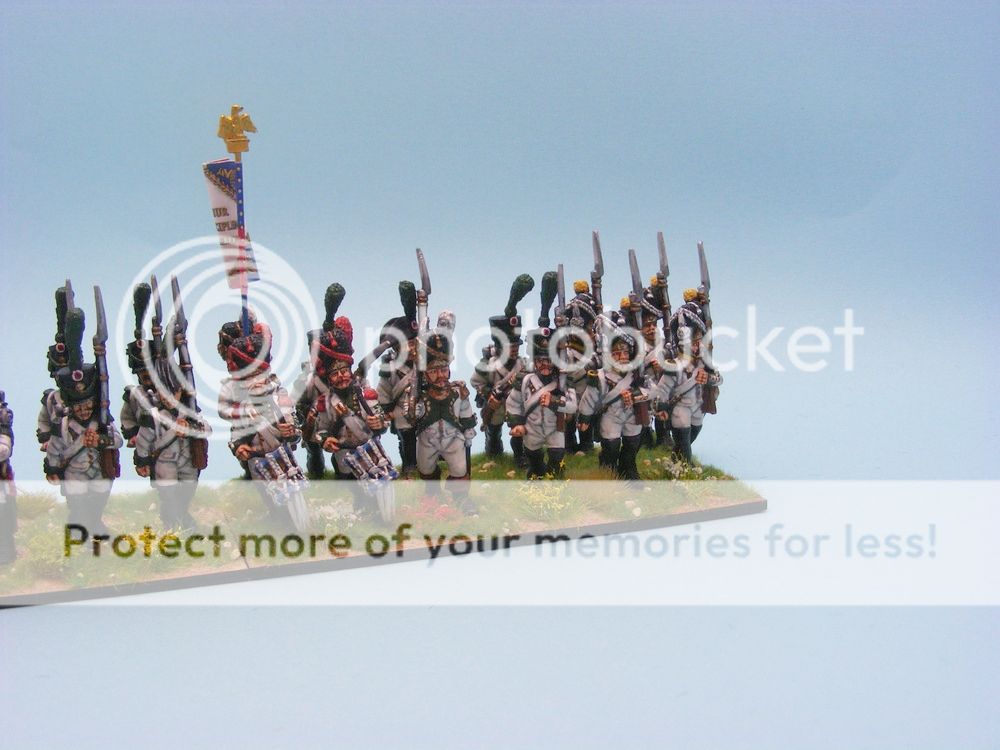






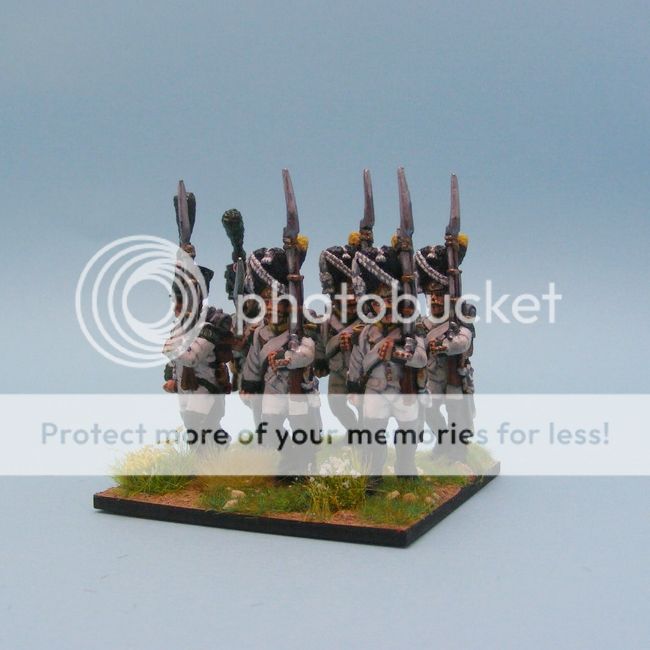



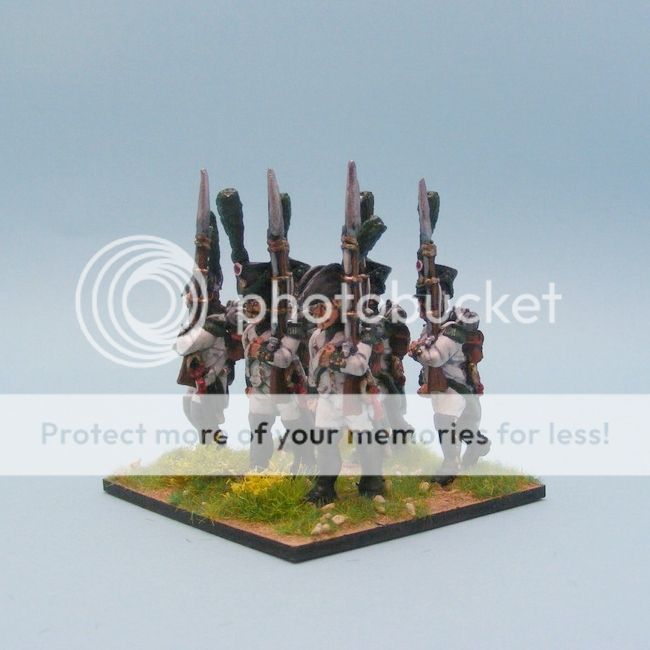




















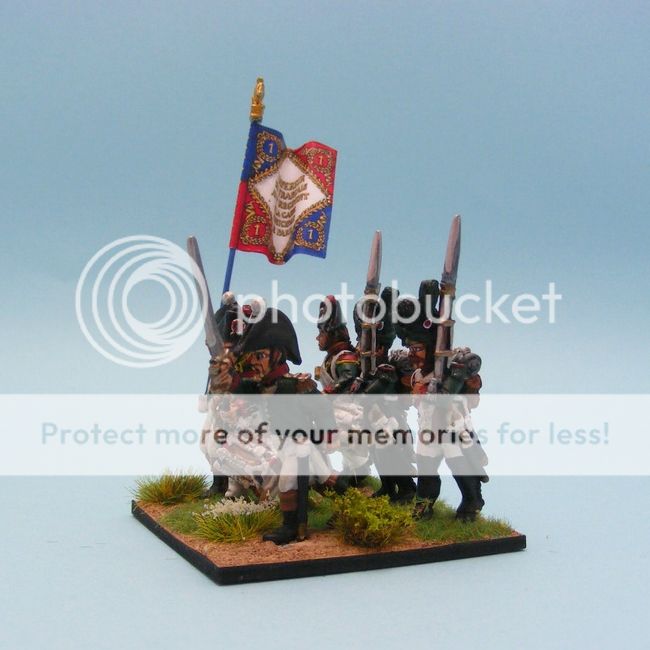




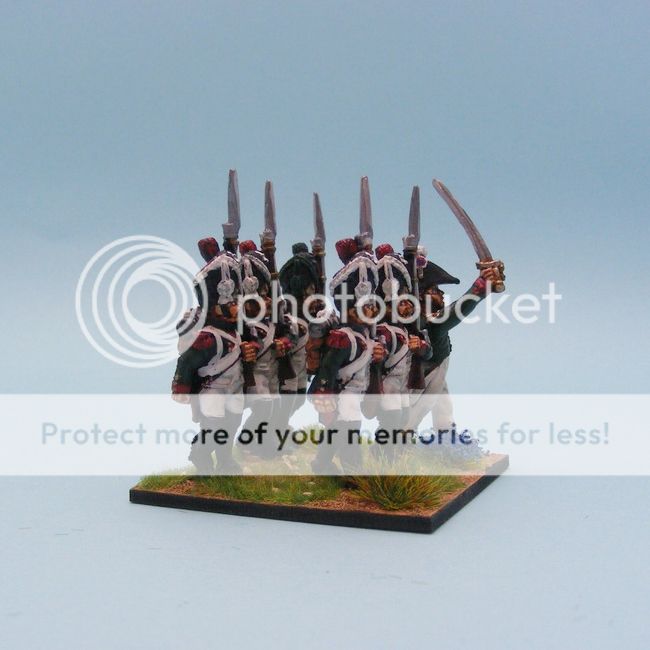
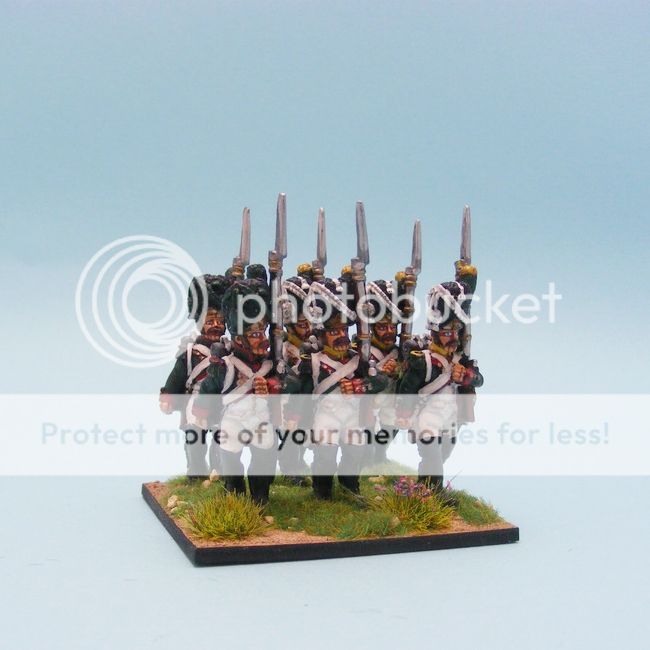

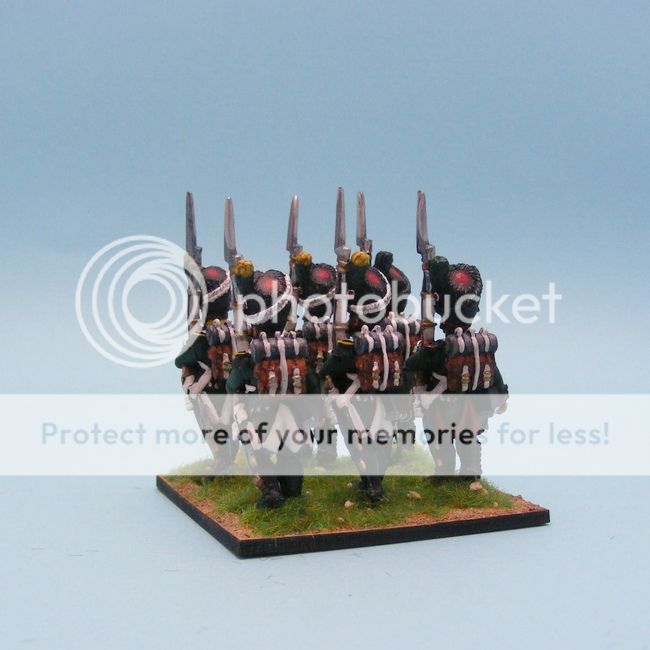









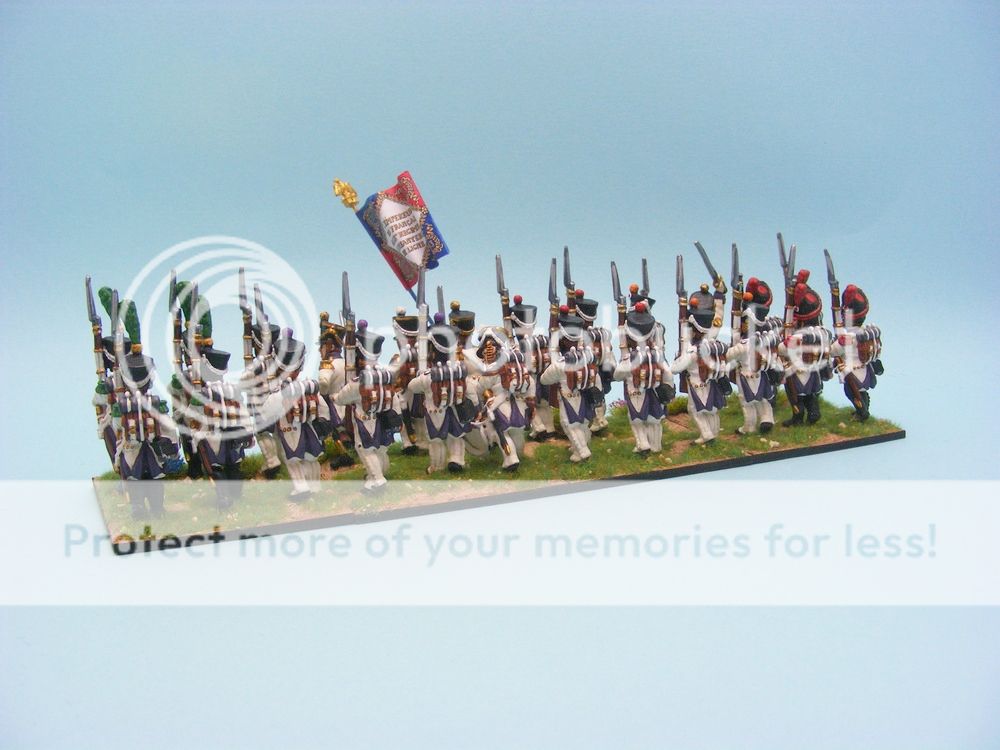
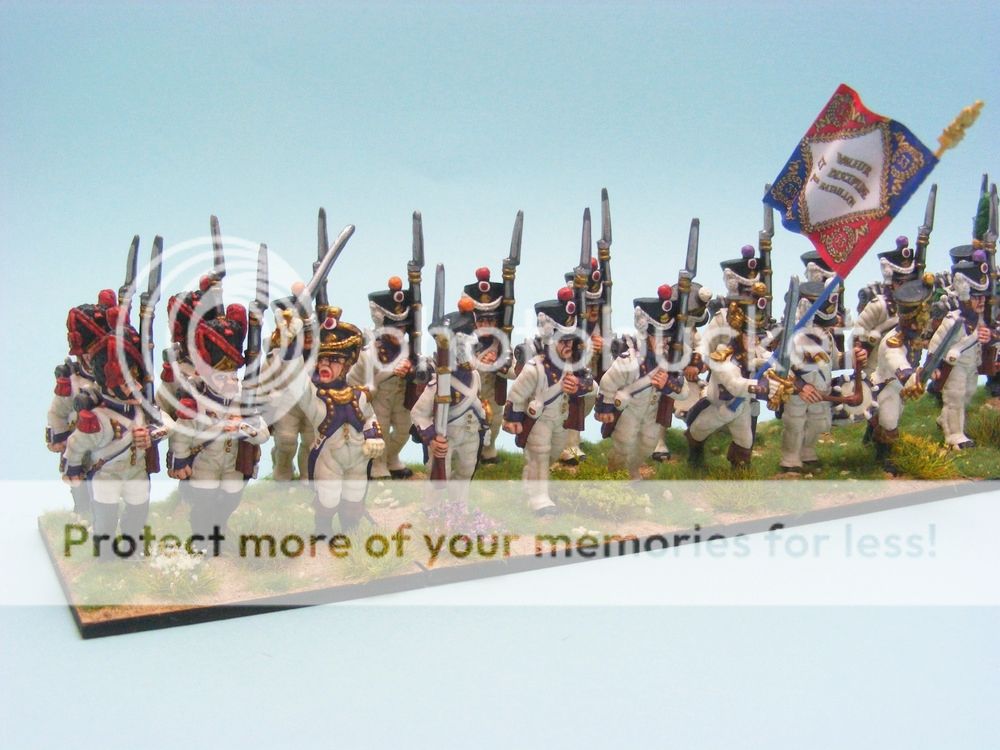







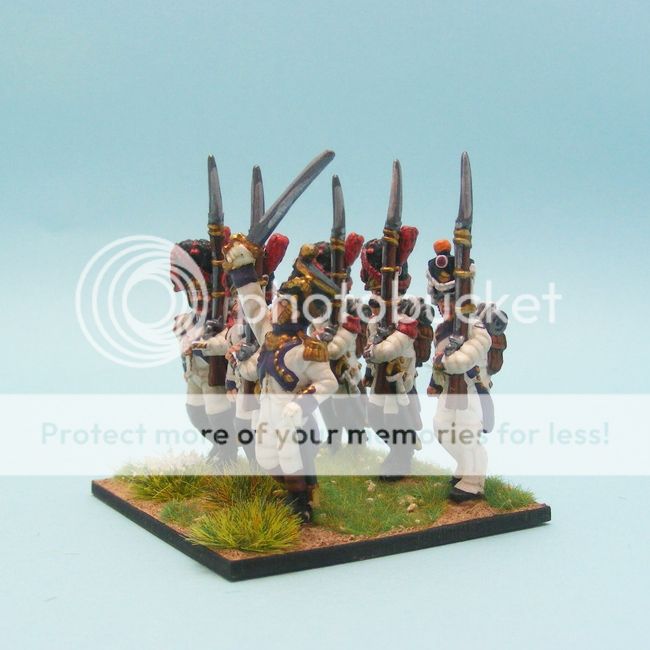




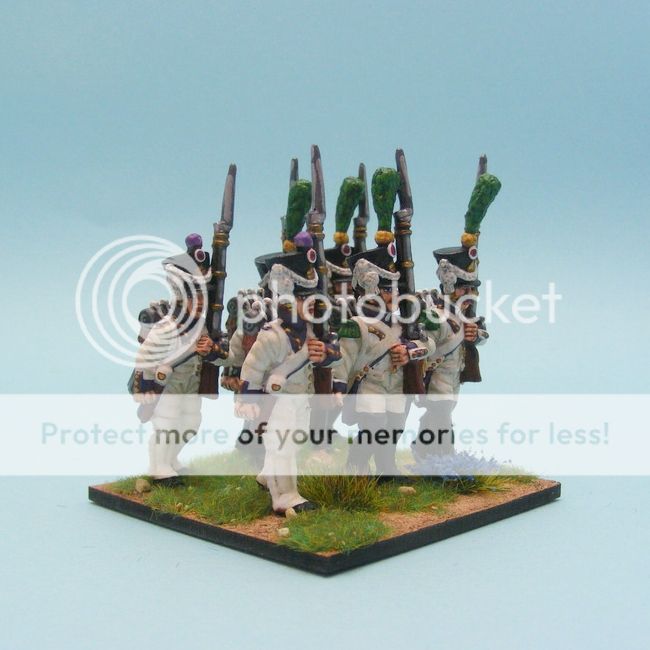
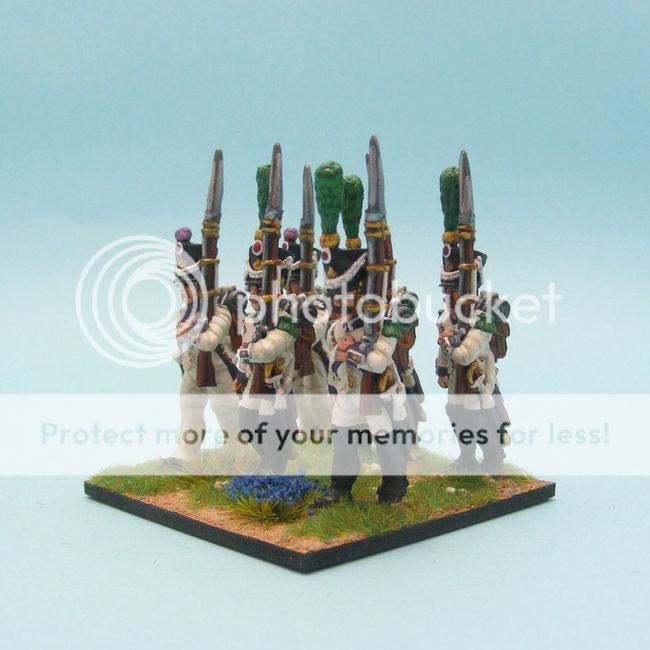





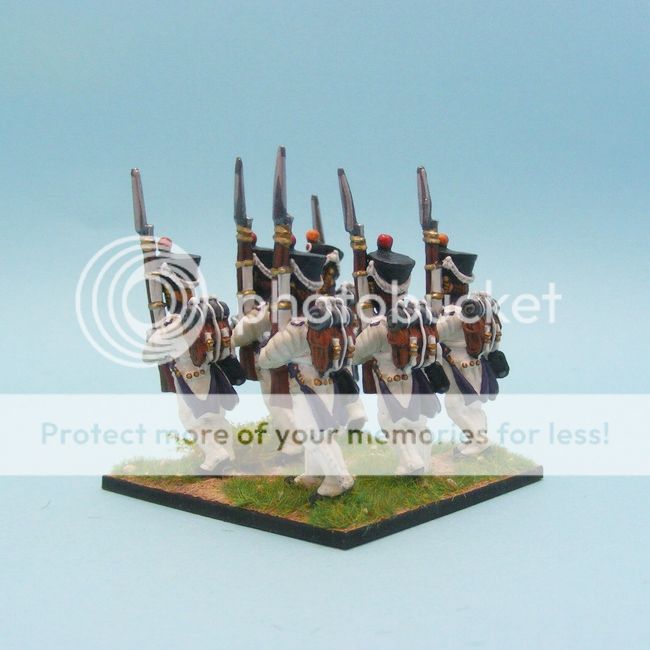
No comments:
Post a Comment